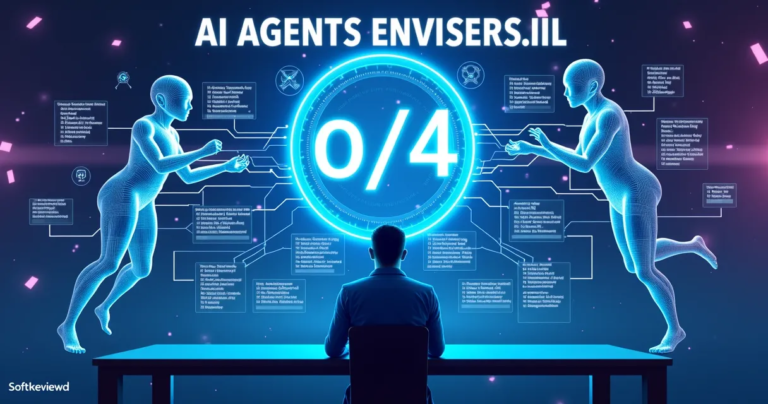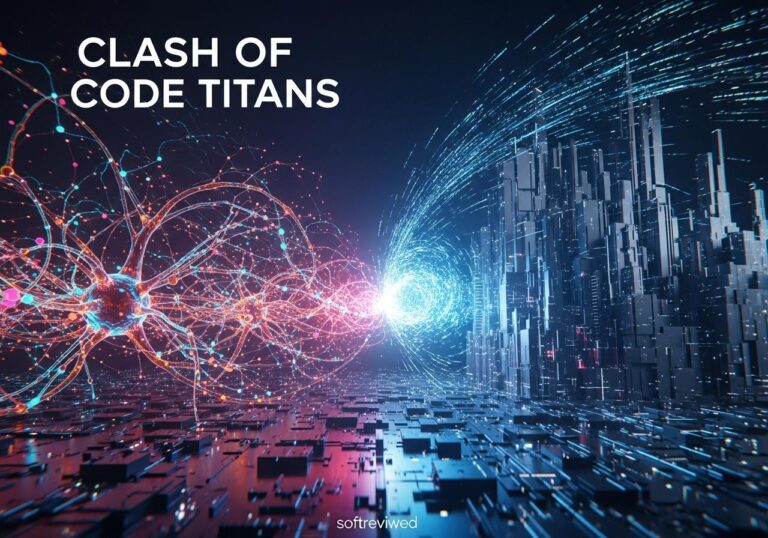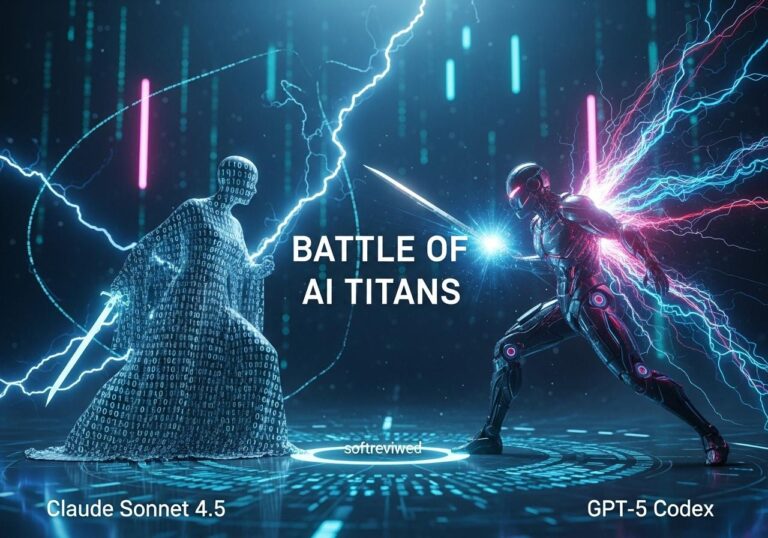🧠 o3 vs o4-mini: Advanced AI Models Comparison
Anthropic’s latest AI models feature breakthrough capabilities in reasoning, tool usage, and multimodal understanding with different price-performance tradeoffs.
🔄 Multi-Step Reasoning & Autonomous Tool Use
Both o3 and o4-mini employ sophisticated reasoning chains to break down complex problems into manageable steps. They can plan solutions and execute tasks such as web searches, code execution, and data analysis without requiring explicit prompts from users.
🖼️ Enhanced Multimodal Capabilities
These models can interpret and interact with visual inputs including whiteboards, diagrams, and even low-quality images. Advanced functionality allows them to zoom into important details, rotate images, or add annotations directly during their reasoning process.
⚖️ Performance vs. Cost Trade-Off
| Model | Coding Accuracy | Cost (Input/Output) | Speed |
|---|---|---|---|
| o3 | 69.1% | ~$10/$40 per million tokens | Slower (thorough analysis) |
| o4-mini | 68.1% | ~$1.10/$4.40 per million tokens | Faster (real-time applications) |
🤖 Agentic Functionality
These models operate with increased autonomy, seamlessly combining multiple tools like web browsing, code execution, and image generation to tackle complex tasks independently. This represents a significant step toward more self-sufficient AI assistants that can manage multi-step workflows with minimal human guidance.
💰 Enterprise & Developer Pricing
The models target different use cases based on their pricing structure: o3 is positioned for deep analysis and ideation tasks where thoroughness is critical, while o4-mini is optimized for customer support and quick analytics where cost-efficiency is paramount. Developers can access both models through the Chat Completions and Responses APIs.
💻 Coding Accuracy & Integration
Both models demonstrate exceptional coding capabilities, outperforming their predecessors on benchmarks. The o3 model reaches 69.1% accuracy on SWE-bench verified, while o4-mini achieves a comparable 68.1%. Developers benefit from the Codex CLI, which enables browser-based collaboration for more efficient coding workflows.
Artificial intelligence often moves in leaps, not just steps. There are moments when a new development doesn’t just feel like an incremental improvement, but a genuine glimpse into a different future. OpenAI suggests their latest releases, o3 and o4-mini, represent one of those moments. Building on the foundation of models like GPT-4 and their own O1 series, these new additions aren’t just about generating text or code; they’re designed to reason, plan, and crucially, use tools to interact with the digital world in unprecedented ways. This signals a significant shift towards more capable, potentially agent-like AI systems.
For anyone following the AI space, the buzzwords are familiar: reasoning, multimodality, efficiency. But OpenAI claims o3 and o4-mini deliver substantial progress, particularly in AI reasoning and tool use. We’ll explore what makes these models tick, how they perform compared to predecessors and competitors like Google’s Gemini, where they’re already making an impact, and what this leap means for developers and users alike. Get ready to meet the AI systems that don’t just talk the talk, but increasingly, walk the walk.
Beyond Prediction: OpenAI Unveils Models That Think and Do
We’ve grown accustomed to AI models that excel at predicting the next word or pixel. While impressive, their ability to interact dynamically with information or execute tasks has been limited. OpenAI positions the new O-series, specifically the released o3 and o4-mini, as a departure from this paradigm.
A Leap in Reasoning: More Than Just the Next GPT
Greg Brockman, OpenAI’s President, described certain models as feeling like a “qualitative step into the future,” citing GPT-4 as a previous example. He places the new O-series firmly in this category. The emphasis isn’t just on better benchmarks (though they boast those too), but on a deeper capacity for complex reasoning. Mark Chen, Head of Research, elaborated that these advancements stem from continued algorithmic progress within their Reinforcement Learning (RL) paradigm, scaling both training-time and test-time capabilities. This suggests a more profound understanding and problem-solving ability compared to prior generations.
Introducing the O-Series: Meet o3 and the Efficient o4-mini
OpenAI is rolling out two key models for broad use:
- o3: Represents the state-of-the-art in reasoning capabilities within this new series. It’s positioned as the high-performance option, excelling at complex tasks requiring deep thought and planning, especially when combined with tools.
- o4-mini: Designed for high efficiency and speed. While perhaps not reaching the absolute reasoning peaks of o3, o4-mini offers impressive performance at a significantly lower cost and higher speed, making advanced AI more accessible. Performance charts indicate o4-mini often matches or surpasses the capabilities of the previous generation’s high-end models (like o3-mini high) at much better price points.
These models are being made available incrementally via the OpenAI API and ChatGPT, starting with Plus, Team, and Pro subscribers, with Enterprise and EDU tiers following.
The Secret Sauce: Tool Use Takes Center Stage 🛠️
Perhaps the most significant advancement highlighted is the native integration of tool use. This transforms the models from passive predictors into active participants capable of executing actions.
From Model to System: How Tool Integration Changes Everything
Previous models could generate code or describe steps, but o3 and o4-mini can actively use tools as part of their problem-solving process. Think of it like this:
- 👉 Old way: Ask AI how to calculate something complex. It tells you the formula.
- 👉 New way (with tools): Ask AI to calculate something complex. It recognizes the need for calculation, invokes a calculator tool (like Python), performs the calculation, and gives you the answer.
This applies to a wide range of tools:
- ✅ Code Execution: Running Python code snippets.
- ✅ Web Browsing: Searching for up-to-date information.
- ✅ API Calls: Interacting with external services.
- ✅ File Manipulation: Working with data on a user’s system (via tools like the Codex CLI).
This ability fundamentally changes the interaction, making the AI feel less like a chatbot and more like a digital assistant or agent that can do things.
Chain of Thought on Steroids: Hundreds of Tool Calls in Action
The models don’t just use tools sporadically; they weave them into complex reasoning chains (Chain of Thought – CoT). Brockman mentioned observing o3 making up to 600 consecutive tool calls to solve a single, difficult problem. This demonstrates a sophisticated level of planning and execution, where the model iteratively uses tools to gather information, process it, and refine its approach toward a solution.
Seeing is Believing: Advanced Vision and Image Manipulation
The tool-use capability extends powerfully into the visual domain. Mark Chen explained that the models can now truly “think with images.”
📌 Example: You upload a blurry, upside-down, or complex image.
➡️ The model can use Python tools within its thought process to:
* Crop relevant sections.
* Rotate or reorient the image.
* Enhance or analyze specific parts.
* Extract data or information.
➡️ It then uses this processed visual information to answer your query or complete the task.
This multimodal reasoning, combined with tool-enabled image manipulation, unlocks new possibilities for visual understanding and interaction that go far beyond simple image captioning.
Real-World Smarts: Where o3 and o4-mini Shine ✨

While benchmark scores are important indicators, OpenAI emphasizes the practical applicability of these new models, highlighting successes beyond standardized tests.
Cracking the Code: A Software Engineering Powerhouse
A standout capability is software engineering. Brockman, an experienced programmer himself, noted that he found these models better than him at navigating OpenAI’s own complex codebase. This isn’t just about generating isolated code snippets; it’s about understanding and working within large, real-world projects.
- Codebase Navigation: Understanding intricate dependencies and structure.
- Debugging: Identifying and potentially fixing errors in existing code.
- Implementation: Writing code that fits correctly within a larger system architecture.
- Tool Integration: Using linters, formatters, or build tools as part of the coding process.
This enhanced coding prowess, powered by reasoning and tool use, promises significant productivity gains for developers.
Scientific Breakthroughs on Demand? Novel Ideas in Science & Law
OpenAI reports that top scientists are finding that these models produce “legitimately good and useful novel ideas.”
- Science: Examples include generating new ideas for system architecture (as mentioned by Brockman regarding a colleague’s experience) and aiding in complex physics research, like helping prove an unsolved theorem in condensed matter physics using o3-mini high (as cited by Mark Chen). One demo showed o3 analyzing a 10-year-old physics research poster, extracting the core findings, performing necessary calculations the original author hadn’t finished, searching the web for current state-of-the-art results for comparison, and summarizing the differences – all in minutes.
- Law: The models show “great results” in legal domains, likely leveraging their advanced reasoning and information retrieval capabilities (via browsing tools) to analyze case law, draft documents, or answer complex legal questions.
While not replacing human experts, these models act as powerful research assistants and creative partners, capable of synthesizing information and proposing new directions.
Beyond the Benchmarks: Practical Problem Solving
The combination of enhanced reasoning, tool use, and improved multimodal understanding allows these models to tackle a wider range of practical problems more effectively than ever before, moving closer to the idea of a versatile AI assistant.
OpenAI o3 vs. Google Gemini 1.5 Pro: A Quick Look
Direct, apples-to-apples comparisons between frontier models from different labs are always tricky due to variations in evaluation setups, training data, and specific model variants (e.g., o3-high vs. standard o3). However, based on available information and benchmarks mentioned by OpenAI and Google, here’s a tentative comparison:
| Feature/Benchmark | OpenAI o3 (Likely High Variant) | Google Gemini 1.5 Pro | Notes |
|---|---|---|---|
| General Reasoning | State-of-the-Art (per OpenAI benchmarks) | State-of-the-Art (per Google benchmarks) | Both labs claim top performance; specific tasks may favour one or other. |
| Math (AIME) | High performance shown (e.g., 88.9% on 2025) | Strong performance reported | O3 appears exceptionally strong here. |
| Coding (Codeforces) | High ELO rating achieved (~2700+) | Strong coding capabilities demonstrated | O3 shows competitive programming strength. |
| Coding (SWE-Bench) | High accuracy (~69%) | Strong software engineering capabilities | Both target real-world code problem solving. |
| Multimodal | Strong, enhanced by tool use for manipulation | Strong, known for long context video/audio | Different strengths; O3 emphasizes tool interaction with visuals. |
| Tool Use / Agentic? | Core focus, deeply integrated into reasoning | Function calling supported, improving | O3’s architecture seems heavily built around native tool integration. |
| Context Window | Likely large, details TBD | Very large (up to 1 million tokens) | Gemini 1.5 Pro currently leads significantly on context length. |
| Efficiency/Cost | O3 likely higher cost; o4-mini efficient | Pricing competitive, varies by usage | O4-mini offers a strong cost/performance ratio within OpenAI’s lineup. |
| API Availability | Rolling out now | Widely available |
Disclaimer: This table is based on information available around the time of OpenAI’s announcement and subsequent reporting. Benchmark results and capabilities evolve rapidly. Always refer to the latest official documentation from OpenAI and Google for the most accurate comparison.
Performance Meets Price: The Cost-Efficiency Equation 💰
A key narrative alongside capability improvement is cost efficiency. OpenAI presented charts showing performance plotted against estimated inference cost, revealing strategic positioning for their new models.
O4-Mini: Punching Above Its Weight Class
The o4-mini model consistently appears higher and further to the left on performance-cost graphs than the previous generation (o3-mini variants). This means it delivers superior or comparable performance at a substantially lower cost. OpenAI seems to be positioning o4-mini as the go-to model for tasks requiring speed, efficiency, and strong capabilities without needing the absolute peak reasoning of o3. Its cost-effectiveness also makes it a prime candidate for potential integration into free tiers or broader applications where budget is a major constraint.
O3: Premium Reasoning Power
While o4-mini focuses on efficiency, o3 sits at the higher end of the performance spectrum. It generally outperforms the previous o1 models, even the high-end variants, often at a lower inference cost for equivalent performance. This makes o3 the choice for tasks demanding the deepest reasoning, planning, and complex tool use, where users are willing to pay a premium for cutting-edge capabilities.
Under the Hood: What Powers the O-Series?
While OpenAI keeps specific architectural details proprietary, the presentation hinted at the drivers behind these improvements.
Scaling Laws and RL Advances
The progress aligns with OpenAI’s long-standing focus on scaling laws – the principle that larger models trained on more data and compute generally perform better. However, it’s not just about scale. Mark Chen explicitly mentioned “continued algorithmic advances in our RL paradigm” and scaling both “train time scaling and test time scaling.” This suggests refinements in Reinforcement Learning techniques (likely RLHF and potentially RLAIF or similar methods) are crucial for honing the models’ reasoning and tool-using abilities beyond what pre-training alone provides.
The Importance of Data and Training Compute
Ananya mentioned putting over 10 times the training compute of o1 into producing o3. This massive investment underscores the resource-intensive nature of training frontier models. The quality and diversity of the training data, including data specifically designed to teach tool use and complex reasoning, are undoubtedly critical factors as well.
The Codex Legacy Continues: Empowering Developers
Alongside the new models, OpenAI introduced tools and initiatives aimed squarely at developers, continuing the legacy of their earlier Codex model.
Introducing Codex CLI: Your AI Coding Companion on the Terminal
A significant part of the announcement was the Codex CLI, a command-line interface designed to bring the power of these new models directly into the developer’s terminal environment.
- Purpose: Connects models (like o3/o4-mini) to the user’s local computer and development workflow.
- Capabilities: Allows the AI to interact with local files, run commands (safely, within constraints), understand the context of a codebase, and assist with coding tasks directly in the terminal.
- Safety: Built with safety in mind, running commands with network disabled and limiting file edits to the current directory by default (“full-auto” mode offers more capabilities with user approval).
Fueling the Future: OpenAI’s $1M Open Source Initiative
To encourage the developer community to build upon these new capabilities, OpenAI announced a $1 Million Open Source Initiative. They will provide API credits to support open-source projects that leverage the new models and the Codex CLI, aiming to accelerate innovation and explore the potential of these more agentic AI systems. The Codex CLI itself is also being open-sourced, allowing developers to inspect, modify, and integrate it into their own tools.
What’s Next on the Horizon? 🚀
The release of o3 and o4-mini feels like more than just another model update; it points towards a trajectory of increasingly capable and autonomous AI.
The Path Towards More Capable AI Agents
The deep integration of tool use is a cornerstone of building AI agents – systems that can perceive their environment, reason, plan, and take actions to achieve goals. While o3 and o4-mini may not be full-fledged autonomous agents in the sci-fi sense, they possess key components:
- ➡️ Reasoning & Planning: Demonstrated by complex problem-solving and multi-step tool use.
- ➡️ Tool Use: The ability to interact with and manipulate the digital environment.
- ➡️ Multimodal Perception: Understanding context from text and images.
Future iterations will likely build on these foundations, potentially adding more sophisticated planning, memory, and learning capabilities.
Implications for Work, Research, and Creativity
The impact could be widespread:
- Software Development: AI assistants deeply integrated into IDEs and terminals, significantly accelerating coding, debugging, and testing.
- Scientific Research: AI partners suggesting novel hypotheses, analyzing complex data (like the physics poster example), and even designing experiments.
- Creative Work: Tools that don’t just generate drafts but actively assist in refining workflows, using various software tools under AI guidance.
- Everyday Tasks: More capable assistants managing schedules, booking appointments, or interacting with online services on a user’s behalf.
Of course, this also raises questions about the changing nature of work, the need for verification and oversight of AI actions, and ensuring these powerful tools are used responsibly.
Wrapping Our Heads Around the O-Series
OpenAI’s o3 and o4-mini represent a significant evolution in AI capabilities. The leap lies not just in incremental benchmark improvements, but in the fundamental integration of reasoning and tool use, allowing these models to act more like systems that can do things, rather than just predict things.
From accelerating scientific discovery and supercharging software development to potentially automating complex digital tasks, the potential is vast. The combination of o3’s peak reasoning power and o4-mini’s remarkable efficiency provides options for different needs and budgets. With the Codex CLI putting these capabilities directly into developers’ hands and a commitment to open source, OpenAI is betting that this new generation of models will unlock the next wave of AI-powered innovation. The era of truly interactive, tool-using AI systems appears to be dawning.







